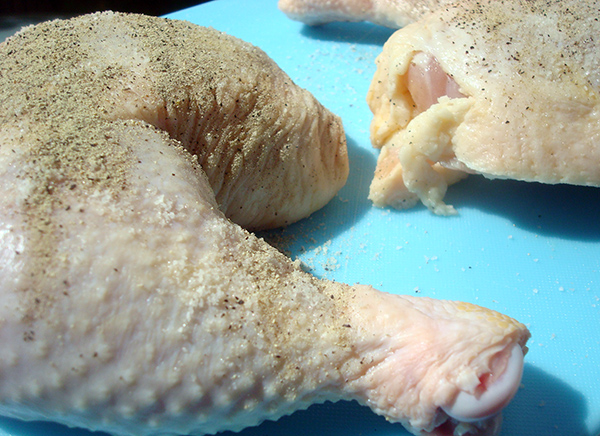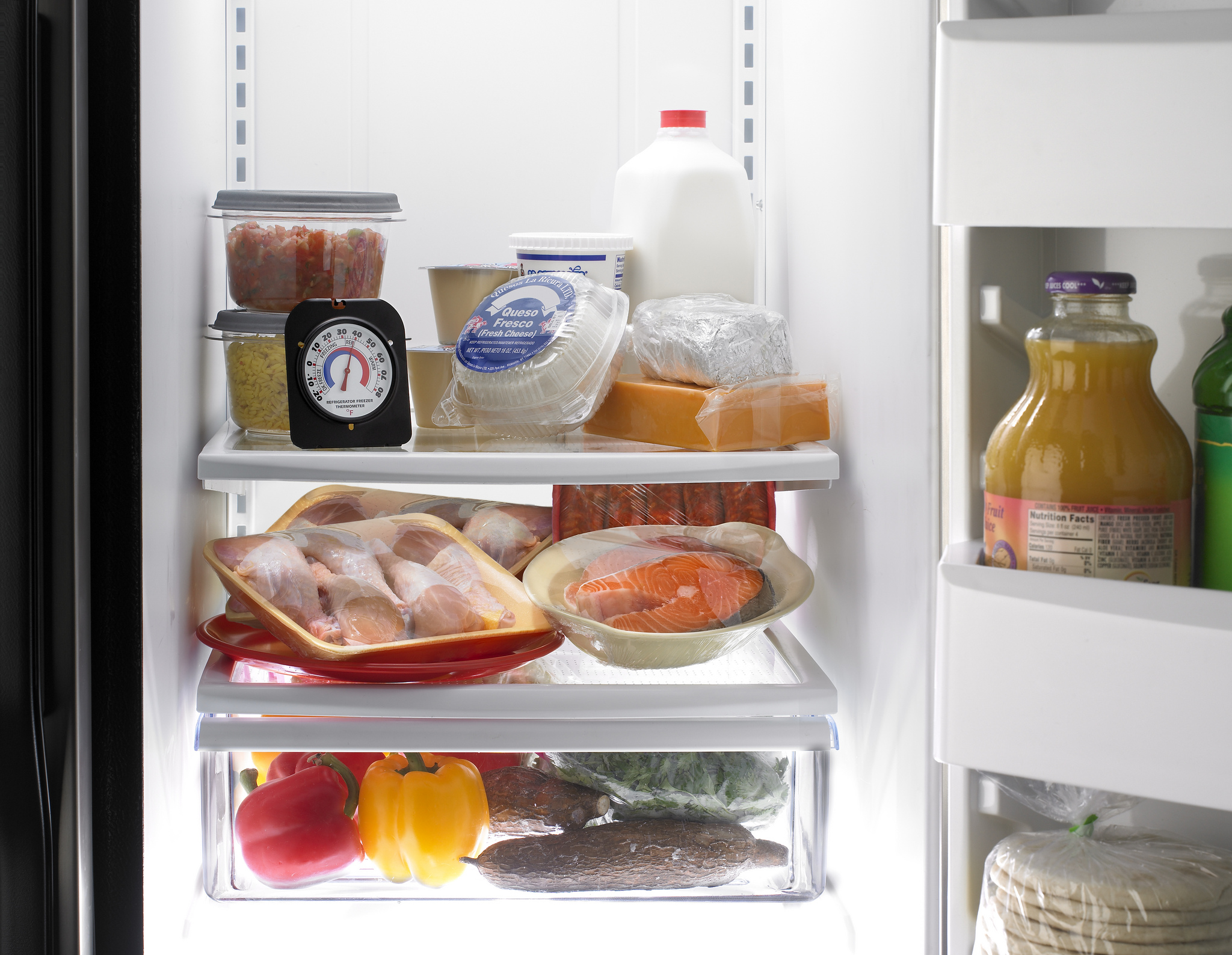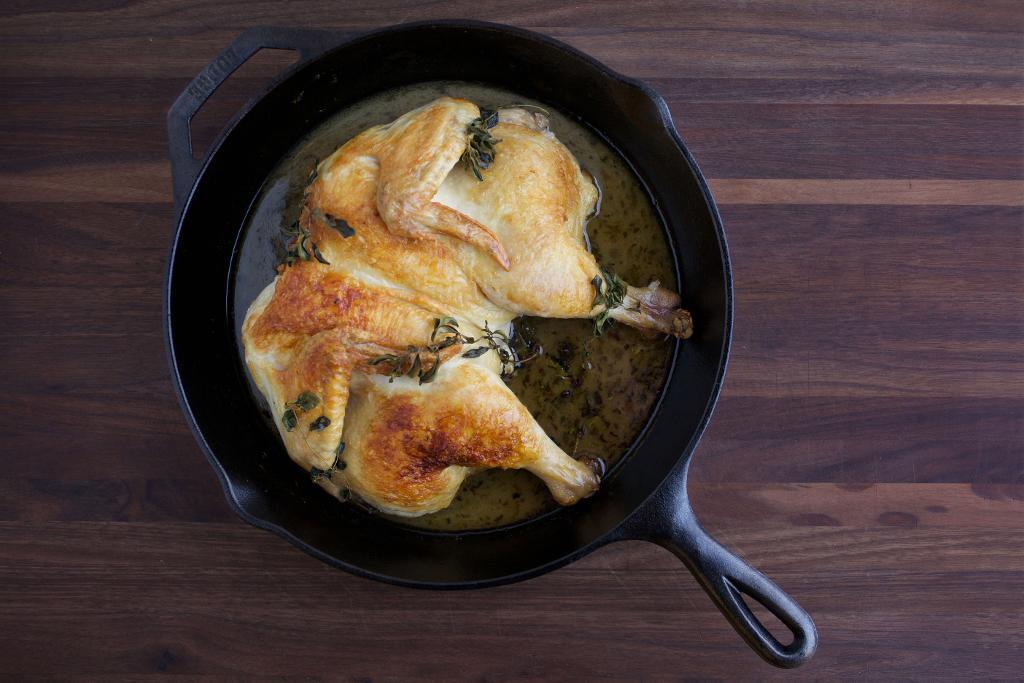Chicken sounds great for dinner, but it’s currently in the freezer and hard as a rock. Do you know how to thaw chicken so that you can get cooking?

Do you know the proper techniques for thawing frozen chicken? Discover four easy methods here.
Chicken cuts via Marge Perry
Learning proper techniques for defrosting chicken is important stuff. Not only can these methods help you adapt your cooking based on the materials and amount of time you have, but they can also keep you and your family safe. If you are thawing chicken (or any meat) in the wrong way, it can lead to the development of unhealthy bacteria and increased chance of food-borne illness.

How not to thaw frozen chicken
Before we go into the ways to thaw frozen chicken, it’s important to briefly discuss how not to thaw frozen chicken. Don’t leave it out at room temperature. While it may seem tempting to let the chicken thaw this way, there are a number of problems.
For one, the outermost layers will thaw unevenly with the interior, and can reach what the USDA calls the “danger zone” of 40-140 F — the temperature range in which bacteria multiplies most rapidly.
How to thaw chicken: 4 ways
Now that we’ve gone over how not to thaw your chicken, let’s discuss how to thaw chicken four safe ways. These methods have varying speeds, but will all keep you safe.

Chicken thighs via Marge Perry
A note on cuts
Different cuts of chicken require different thaw times. In general, the smaller and less dense the cut, the less time it will require. For instance, a chicken breast cut into cubes thaw faster than a large cut of chicken or whole chicken.

Photo licensed via Creative Commons by USDA
Method 1: Refrigerator thawing
To thaw chicken in the refrigerator, transfer the container from the freezer to the refrigerator and let it thaw completely. It’s as simple as that! This is one of the easiest, safest and most gradual methods of thawing chicken.
It’s also one of the most lengthy. Even a package of chicken breasts can take up to a full day to thaw in the refrigerator. An entire frozen chicken could take 24 hours or longer.
Advantages:
- Chicken can be thawed slightly in advance; once completely thawed, it will remain safe for cooking for day or two kept in the fridge.
- This is a safe and gradual method of thawing that will not affect the texture, flavor or quality of the meat.
Disadvantages:
- Requires a significant amount of time — not appropriate if you want chicken for dinner tonight.
Method 2: Cold water thawing
To thaw chicken a little more rapidly, you can place it in an airtight container or freezer bag and submerge it in cold tap water.
Change the water every 30 minutes or so, keeping a close eye on the progress of the chicken. The time required to thaw chicken using this method can range from 2 hours (for individual cuts such as thighs or chicken breasts) to several hours (for an entire chicken or for larger cuts).
Once thawed, the chicken should be cooked immediately and should not be re-frozen unless cooked.
Advantages:
- A fairly quick and even method. If the chicken cuts are small, you could begin the thawing process mid-afternoon and your chicken could be ready for dinner.
Disadvantages:
- Requires a bit of attention and monitoring; water needs to be changed every 30 minutes.
- If the container leaks, your chicken can taste bland and watery.
- Full submerging in water is required, so you need to have an appropriately sized vessel.
- You need to cook the chicken ASAP once it is thawed.

Method 3: Microwave thawing
Set your microwave on the “defrost” setting. If your microwave has specific defrost settings based on weight, you can use that function. If not, using the defrost setting, cook the chicken for 2 minutes. Repeat in 30-second intervals until the chicken is thawed.
The time required to thaw chicken in the microwave can be 2 minutes or more — it depends on your microwave, the temperature of the chicken and the size of the cut. It is particularly important to cook the chicken immediately after thawing.
Advantages:
- This is by far the fastest thawing method, requiring mere minutes to complete.
- It’s an extremely easy method that doesn’t require any special equipment other than the microwave oven.
Disadvantages:
- Microwave-thawing can affect the texture of the chicken, making it tough or rubbery.
- Your microwave may not be able to accommodate larger cuts of chicken.
- You must cook the chicken right away after thawing, so have your mise en place set up so that you can get cooking!

Spatchcock chicken via Marge Perry
Method 4: Non-thawing
Did you know that you don’t actually need to thaw chicken before cooking? It’s true. You can transfer frozen chicken straight from the freezer to the oven or pan.
In my experience, this method works best for simple chicken recipes (say, seasoned with salt and pepper). The melting of the frozen condensation can strip the chicken of its flavor, especially if you’re using a subtle spice mix.
According to the USDA, the key difference with cooking with frozen chicken is timing: It can take 50 percent longer to cook frozen chicken to meet standards for food safety (an internal temperature of 165 F, according to FoodSafety.gov).
Advantages:
- No thawing required.
- You don’t have to worry about the chicken entering the “danger zone” range of temperatures while thawing.
Disadvantages:
- The finished texture may not be the same depending on your cooking method.
- It can be difficult to follow recipes that call for thawed chicken when using chicken directly out of the freezer.
- The cook time will be longer when using frozen chicken.

Share tips, start a discussion or ask one of our experts or other students a question.
No Responses to “Kitchen Basics: How to Properly Thaw Frozen Chicken”